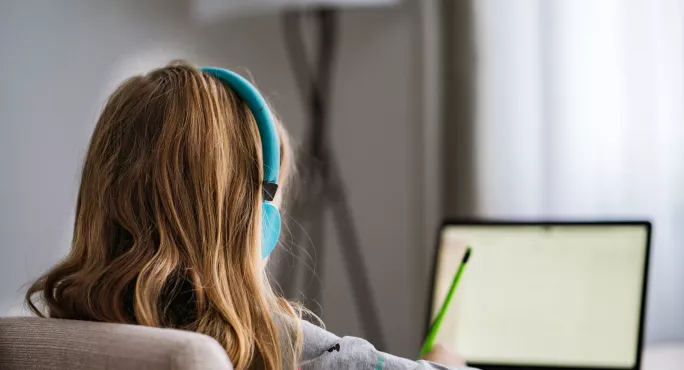6 tips for pupil safety during remote learning

When children are being taught from their own homes, as has been the case for so many for so long in the past year of the Covid pandemic, they may no longer be coming into contact with those who would protect them from harm - those who would be able to spot abuse, flag issues to social workers and ensure the child’s safety. There have also been fewer referrals to children’s services for at-risk children, thus raising further welfare concerns.
Families are spending a lot more time in the house, and we have seen that calls to organisations such as the NSPCC have increased drastically.
While schools are open to vulnerable children, it is often the case that the children most at risk will not be attending - and we still don’t know when all pupils will be back full time at schools in Scotland. This has put an extra onus on teachers to think about safeguarding throughout the school day.
Online learning: How teachers can focus on safeguarding
1. Face-to-face check-ins
Local authorities across Scotland have different rules about children having cameras on for virtual lessons and it is extremely important that teachers follow this guidance.
However, for teachers who are seeing their pupils, what do those visuals tell you? Is there any visual bruising? Is the child always wearing the same clothes? Have they gone through any rapid weight changes? Do they look withdrawn? Of course, this should feed into the bigger picture of that child - while some of these factors alone do not immediately call for concern, they should be considered on an ongoing basis.
Student wellbeing: Six ways to help students rebuild friendships at school
Background: What Nicola Sturgeon said about pupils’ return to schools
Schools reopening: Four reasons why the schools update was ‘baffling and concerning’
Catch-up: Should we just start the year all over again?
2. Be aware of any background noise
If the camera of a pupil is off, it is difficult to tell how the pupil is really doing. Focus on the tone of the discussion with the child or young person - are they giving subtle clues, or do they sound off-character? Listening in to the overall background might indicate a hostile environment for that child if, for example, constant shouting, fighting and swearing can be heard.
3. Read between the lines
Away from virtual lessons, children may also communicate through their work, even if they are doing it subconsciously. When you are reviewing homework, look out for any narratives that seem concerning. Are they trying to tell you something through their writing or bringing up themes of violence or abuse?
4. Watch out for changes in behaviour
While the participation of the class will have decreased amid lockdowns and will be dependent on the lifestyle of that child and their family, it is important to look at any significant changes in behaviour. An eager student in the physical classroom may have dropped their commitment at home for a number of reasons, but drastic and rapid changes in behaviour should not be completely written off because of Covid.
5. What to do if you are concerned
As well as education, safeguarding should be on the agenda and can be worked into the curriculum. Teaching children about the channels available for support, signposting national helplines and giving them the tools they need to ask for help could be crucial to their wellbeing.
Make sure there is time within the school day for check-ins, with an open dialogue for children to raise any issues with teaching staff.
6. Support for teachers
Concerns such as these might not be commonplace for some mainstream teachers, but there is support available. Each school will have someone responsible for safeguarding who you can raise concerns with. It could also be useful to check in with other teachers if the child has siblings in other year groups - it is important, however, that schools have a mechanism for tracking this to ensure that concerns are further explored. The concern might often mean that the parent does not have the support they need, and early intervention with external help could be required.
In terms of wellbeing, the risks to children right now have magnified by the restrictions on education that Covid has enforced. A joined-up approach is vital to ensure that no child falls under the radar.
Ruby Whitelaw is quality and safeguarding manager at Kibble, and Lorna Yee is principal teacher at Kibble. Kibble is a Scotland-based specialist child and youth care charity and social enterprise, whose services include schools
For more on safeguarding policies and information on-at risk children, here are useful links to advice from government and the the charities sector
You need a Tes subscription to read this article
Subscribe now to read this article and get other subscriber-only content:
- Unlimited access to all Tes magazine content
- Exclusive subscriber-only stories
- Award-winning email newsletters
Already a subscriber? Log in
You need a subscription to read this article
Subscribe now to read this article and get other subscriber-only content, including:
- Unlimited access to all Tes magazine content
- Exclusive subscriber-only stories
- Award-winning email newsletters